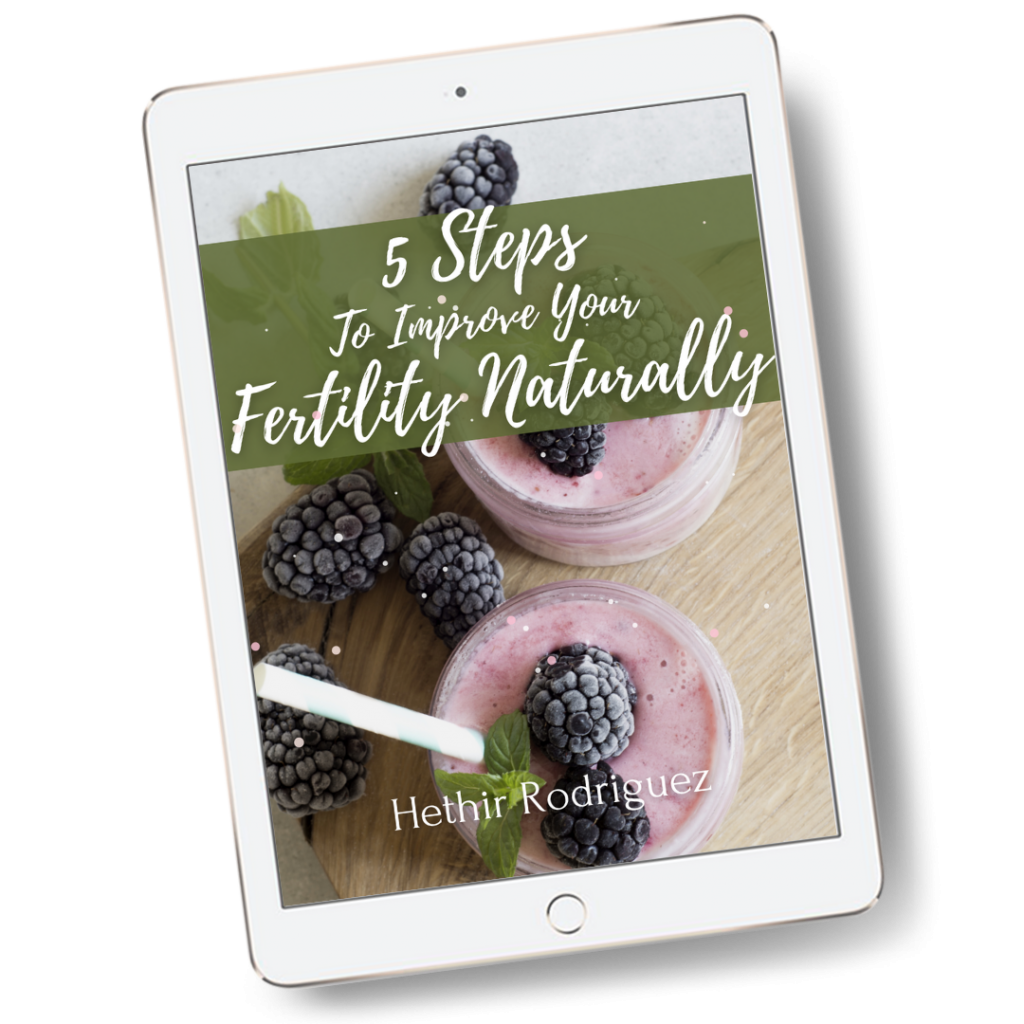With the variety and prevalence of sexually transmitted infections (STIs) that affect millions of people worldwide, it leaves many to wonder how they might negatively impact a person’s ability to conceive and carry a healthy pregnancy. Today we are going to explore this question and find out just how STIs impact fertility health, pregnancy, and a newborn baby and which ones may lead to infertility.
The Importance of Sexual Health
Public health professionals are now calling sexually transmitted diseases, or STDs, sexually transmitted infections, or STIs because the word infection allows the inclusion of HIV/AIDS in this category, but more importantly emphasizes that STIs are transmissible (passed from one person to another) and preventable.
Over half of all Americans alone have or will contract an STI at some point in their life. According to the World Health Organization (WHO), more than 1 million people worldwide acquire an STI every day and chlamydia, gonorrhea, syphilis, and trichomoniasis are contracted by an estimated 500 million people worldwide each year.
The majority of STIs are caused by over 30 different bacteria, viruses and parasites. Many STIs fail to present with symptoms and haven’t shown to have direct connections to infertility. This being said, some do directly impact fertility and all directly impact reproductive organ health, and many have maternal and infant health implications. STIs are spread through sexual contact (vaginal, anal and oral), tissue and blood transfers and even skin to skin contact (even from the skin of a mother during childbirth to her newly born child).
STIs “rank among the top five disease categories for which adults seek health care” according to the World Health Organization. Of the following list of STIs, syphilis, gonorrhea, chlamydia, and trichomoniasis are curable. Many others are viral infections for which there is no cure; however, treatments options are available to control symptoms. While there may be medications for symptom control or treatment, the most effective way to avoid contracting an STI is to avoid participating in high-risk behaviors. Examples of high-risk behaviors are: unprotected sex, sex with multiple partners, and using injectable drugs or sharing needles. Be open and honest with your partner(s) about your sexual past – remember to care enough about your health and try not to be uncomfortable about talking about the potential of STIs with prospective sexual partners.
If you think you may have an STI or learn you have contracted one, work closely with your healthcare provider to manage, treat and understand the STI you have.
Sexually Transmitted Infections
The following is a list of many STIs affecting men and women, a brief description of each, and the impact they may have on fertility health.
Acute epididymitis – A male STI often caused by C. trachomatis or N. gonorrhoeae that causes redness, warmth, and swelling of the scrotum and testes. If recurrent, or left untreated, acute epididymitis can become or cause chronic epididymitis. Chronic epididymitis can lead to infertility in men by damaging sperm, affecting sperm count and mobility.
Bacterial vaginosis (BV) – While not an STI itself, BV can increase a woman’s chances of contracting an STI. BV occurs due to an imbalance of good and bad bacteria in the vagina. Many healthcare professionals link BV with having multiple sexual partners or douching. It is also believed that pregnant women with BV are more likely to experience premature births or have a baby with a low birth weight.
Chancroid – An STI caused by the bacteria Haemophilus ducreyi that is spread by sexual contact with an infected person. The infection is found mainly in developing and third world countries, though the occurrence of it in these countries and in the US has declined in recent years. Chancroid presents as a painful genital ulcer or sore, or as a tender, soft, small, even, pus filled bump or swollen lymph node in the genital area. In men this can appear anywhere on or around the penis and scrotum and in women on the lips of the vagina (labia), the perineal area, and inner thighs. Chancroid can be treated with antibiotics, but can result in scarring to the areas where it appears.
Chlamydia – The most common STI in the US, which is caused by the Chlamydia trachomatis (C. trachomatis) bacteria. Chlamydia infects more than three million people, men and women, each year and is often treated with antibiotics. If left untreated in men, chlamydia can lead to urethritis and in women, pelvic inflammatory disease (PID), and infertility. A pregnant woman with chlamydia can pass it to her baby during birth which can damage the infant’s lungs and eyes.
Gonorrhea – Gonorrhea is known to be a curable STI that can affect both men (urinary tract) and women (urinary tract and reproductive organs). The World Health Organization reports an increase in drug resistance to gonorrhea thus impacting worldwide efforts to eradicate this bacterium. If left untreated, gonorrhea can cause infections in the genitals, rectum, and throat, as well as cause long term health issues such as urethritis, sterility in men, Pelvic Inflammatory Disease (PID), scarring and blockage of the fallopian tubes, ectopic pregnancy, and infertility in women. An infected woman can pass gonorrhea to her baby during birth. In the US, medicated eye drops are administered to babies at birth to prevent eye infections from gonorrhea.
Hepatitis B (HBV) – Hepatitis means inflammation of the liver and also refers to a group of viral infections that have a direct effect on the liver. The “B” strain can be acute or chronic and is thought to be 100 times more contagious than HIV. HBV can be transferred from human to human, even mother to child, through the blood and other body fluids like semen, vaginal secretions, and wounds (blood/pus). HBV is not spread through food or water, saliva (kissing, coughing, sneezing), breastfeeding or skin to skin contact. HBV is commonly vaccinated for in the US and, if left untreated, will result in liver damage and potentially liver cancer.
Herpes – This viral STI is caused by the herpes simplex virus. It is believed that 1 out of 6 people between the ages of 14 and 49 has had a genital herpes infection. Some live without symptoms, while others experience painful sores around the genitals with random, periodic outbreaks throughout their lives. Prescription topical cream can help dry up the sores, but there is no cure for herpes. Herpes is passed through sexual contact even if symptoms are not present. Most concerning, however, is that herpes can be passed from a mother to her child during childbirth which can result in blindness of the infant and even death. Many healthcare providers suggest a pregnant woman with herpes have a c-section to prevent the baby from being infected.
HIV & AIDS – The most serious, incurable, and deadly of all STIs, human immunodeficiency virus (HIV), can lead to acquired immunodeficiency syndrome (AIDS), which for many is a fatal disease of the immune system. “HIV attacks specific cells of the immune system, disabling the body’s defense against other pathogens. When the immune system becomes severely disabled, the HIV infected person has AIDS.” HIV-1, which causes HIV, is carried by more than 33 million people worldwide who have the potential to share it via sexual contact, needles, contact with blood, and from mother to baby in pregnancy, during birth or through breast milk. It is estimated that 25% of babies born to HIV-infected mothers will have HIV in their first year of life. The presence of HIV may not affect the reproductive potential of an infected person, unless they have other infections. A weakened immune system lends itself to being easily attacked by other viruses and bacteria.
Human Papillomavirus (HPV) – More than 290 million women have an HPV infection (there are many strains of this virus) and it is the most common viral STI in the US. Some people’s immune system may destroy the HPV virus, others live with this STI for life and often without symptoms. HPV is contracted by having vaginal, anal or oral sex with an infected person and may present as genital warts in men and women, which can be removed by a doctor, but may reappear, and may also cause cervical cancer in women. HPV may be passed to an infant during childbirth, though many sources say this is a rare occurrence.
Pelvic Inflammatory Disease (PID) – Sadly, one in eight women with a history of PID experience difficulties getting pregnant. PID is a complication from having other STIs like chlamydia and gonorrhea. PID can lead to infertility, an ectopic pregnancy (during which a fertilized egg implants somewhere other than the uterus, most commonly in a fallopian tube), formation of scar tissue both outside and inside the fallopian tubes, which in turn can lead to tubal blockage, and long-term pelvic/abdominal pain.
Pubic Lice (Crabs) and Scabies – These are actually insects and mites that infest pubic hair causing itching and a rash. Each can affect men and women and are transferred from person to person via skin contact, clothing, and bedding. Pubic lice and scabies can be treated with medicated shampoo and by washing clothing and bedding in very hot water.
Syphilis – A bacterial STI that progresses through three distinct stages. Syphilis can be treated with antibiotics if detected early on. Syphilis is considered a very serious STI and those who present with any of the symptoms, should be seen by a doctor right away. First, a painless sore called a chancre appears where the skin was exposed, from where it can spread. Second, a rash appears on the hands and feet, and sores appear on the mouth. Many also experience flu-like symptoms. Third, symptoms may disappear, but the virus can still be alive within the body where is can attack organs like the heart, where it can cause heart disease, and the brain, which can lead to brain damage, paralysis, and even death. Pregnant women who have syphilis will pass it to their baby. This STI may damage a baby’s skin, eye, teeth, bones, and liver.
Trichomoniasis (Trich) – This STI is caused by a protozoan parasite called Trichomonas vaginalis that infects the urinary tract of men and the urinary tract and/or the vagina in women. Trich can be treated with prescription antibiotic medication. Trichomoniasis is considered the most common curable STI. An estimated 3.7 million people have Trich in the United States, but only about 30% develop any symptoms. Trich is not only transferred through sexual intercourse, but also through skin to skin contact and even contact with moist clothing items and towels that have been on an infected human. If left untreated in men, Trich can lead to urethritis and, in women, vaginitis. Women with Trich during pregnancy are at risk for preterm labor and birth, and their baby is more likely to have a low birth weight.
Taking Care of Your Reproductive Health
STIs can have serious consequences beyond the immediate impact of the infection itself, through mother-to-child transmission of infections and chronic diseases. Each is transmittable by unsafe sexual practices or careless sexual habits. Each affects various reproductive organs and many also impact fertility, especially if left untreated.
Talking about STIs is a sensitive issue. It may be embarrassing to admit you have or have had one. It can also feel uncomfortable to talk about STIs with young adults embarking on their first sexual experiences, but the reality is that STIs are harmful physically and emotionally long term and adequate education about them should be the first step to prevention.
- CDC: Centers for Disease Control and Prevention: A-Z Index – A. (n.d.). Retrieved from: http://www.cdc.gov/az/a.html
- Sexually Transmitted Diseases (STDs)- STDs & Infertility. (2017, October 06). Retrieved from: http://www.cdc.gov/std/infertility/
- STD INFORMATION YOU NEED: Molluscum Contagiosum. (n.d.). Retrieved from: http://www.epigee.org/health/mc.html
- Rodriguez, H. (n.d.) How STD’s Can Affect Your Fertility. Retrieved from: http://natural-fertility-info.com/std-fertility.html
- Fortin, J. (February 9, 2009) When STDs lead to infertility. CNNHealth.com. Retrieved from: http://www.cnn.com/2009/HEALTH/02/09/hm.stds.infertility/index.html?iref=24hours
- Infertility. (2018, March 08). Retrieved from: https://www.mayoclinic.org/diseases-conditions/infertility/symptoms-causes/syc-20354317
- Wittenberg, M.E. (Aug 14, 2017). STDs That Can Cause Infertility. MPH. Retrieved from: http://www.livestrong.com/article/1007744-stds-can-cause-infertility/
- Chancroid: MedlinePlus Medical Encyclopedia. (n.d.). Retrieved from: https://medlineplus.gov/ency/article/000635.htm
- Parenthood, P. (n.d.). What Are STDs? | Sexually Transmitted Diseases Information. Retrieved from: http://www.plannedparenthood.org/health-info/stds-hiv-safer-sex
- Ochsendorf, F. R. (2008). Sexually transmitted infections: Impact on male fertility. Andrologia, 40(2), 72-75. doi:10.1111/j.1439-0272.2007.00825.x. Retrieved from: https://onlinelibrary.wiley.com/doi/full/10.1111/j.1439-0272.2007.00825.x
- Sexually transmitted infections (STIs). (n.d.). Retrieved from: https://www.who.int/en/news-room/fact-sheets/detail/sexually-transmitted-infections-(stis)





